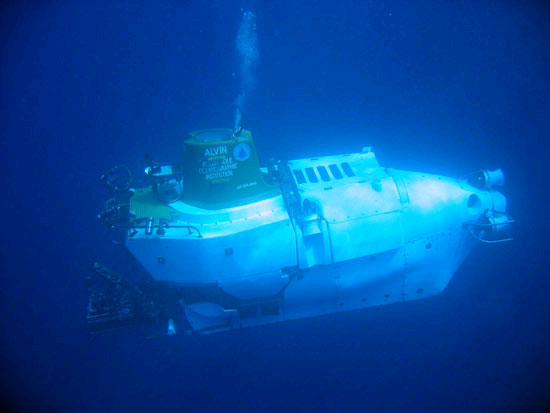Space Station to the Seafloor: Highest and Lowest Humans Chat

A scientist in one of the deepest places on Earth connected with an astronaut in one of the highest Friday to chat about similarities and differences in their jobs and to field questions from the public.
Speaking from inside Alvin [image], a submersible two miles beneath the Pacific Ocean, marine biologist Timothy Shank [image] talked with Expedition 14 flight engineer Sunita Williams [image], who is currently flying high above Earth in the International Space Station (ISS).
"Greetings Alvin, this is the International Space Station Alpha, flying about 250 miles above the Earth's surface," Williams began.
During their approximately 15-minute conversation, the pair answered questions from students, educators and the public.
One questions was about what alien life forms each had seen so far in their separate environments.
"We haven't seen anything up here, but I'm sure you've seen stuff that looks pretty weird down there," Williams said.
"Yes, absolutely Suni," said Shank, a researcher with the Woods Hold Oceanographic Institution (WHOI). "Some of the life forms down here...I think of as being aliens."
Breaking space news, the latest updates on rocket launches, skywatching events and more!
Despite the many differences in their research-Shank works in a murky aquatic environment, beyond the reach of the Sun, whereas Williams sees 15 sunrises a day-the two found some common ground.
"We're both living life in the extremes," Shank said.
At times, the two showed signs of "status" envy.
"Hey, what do you think about switching jobs?" Williams asked. "I'd love to do your job and see what's living on the ocean floor. How about coming up here sometime?"
"I would love to do that," Shank said.
Astronauts aboard the ISS frequently make orbital calls back home to share their experiences with people on Earth. The ISS crew also recently talked to Martha Stewart about how to make their orbital laboratory seem a bit more like home.
- Image Gallery: Underwater Explorers
- Martha Stewart Makes Orbital Call to ISS Crew
- Complete Coverage: ISS Expedition 14
- All About the International Space Station
Ker Than is a science writer and children's book author who joined Space.com as a Staff Writer from 2005 to 2007. Ker covered astronomy and human spaceflight while at Space.com, including space shuttle launches, and has authored three science books for kids about earthquakes, stars and black holes. Ker's work has also appeared in National Geographic, Nature News, New Scientist and Sky & Telescope, among others. He earned a bachelor's degree in biology from UC Irvine and a master's degree in science journalism from New York University. Ker is currently the Director of Science Communications at Stanford University.
